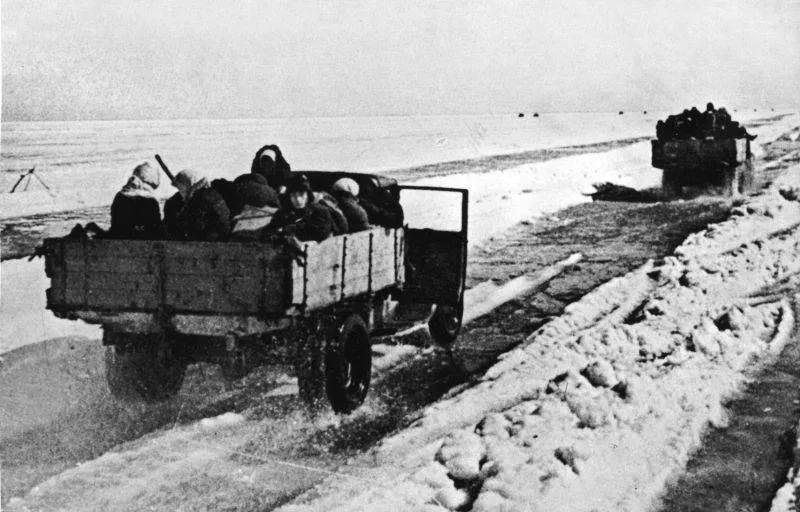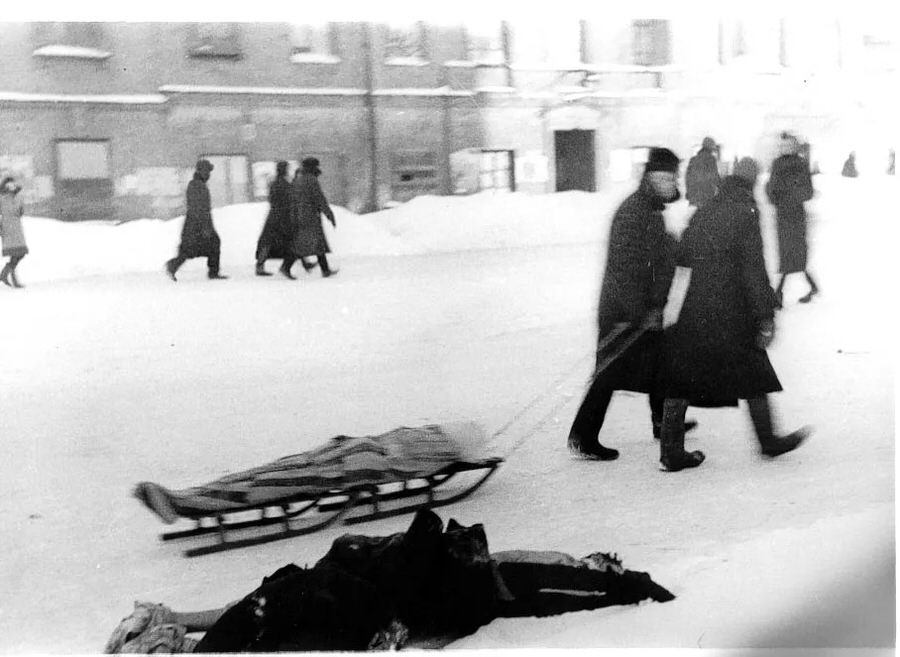My grandmother never told me much about her experience of the siege. We learned a lot about it at school – the 900 days, the 1.5 million dead, the heroism of the people, the Shostakovich’s Symphony No. 7, the “this side of the street is more dangerous during an aerial attack” (the signs are still there to see in modern day St Petersburg) – but there was very little told about it at home.
It was still raw, even 40, 50, 60 years later.
There were just glimpses. Like trading her mother’s ruby rings and diamond earrings for pieces of bread – profiteering is always rife in times like these. Like taking shifts on the rooftops, putting out explosives that rained down on the city, shoving them into buckets of sand. Like boiling leather belts and glue for food.
She was just a teenager then, same age as my son is now.
But there was one story – well, one sentence, really, as it was all that was ever told – that I struggled to wrap my head around, always. How one day her beloved step-dad Nikolay, “stepped outside, leaned against the wall and died of hunger”. She didn’t remember – didn’t know? – where he was buried.
I couldn’t really imagine this. What do you mean, “sat down and died of hunger”? What do you mean, you don’t know where he’s buried? Who buried him? Or was he just left there?
It’s hard to wrap your head around something like this.
Yes there were the old black and white photographs of from the besieged Leningrad that I saw many times, people carrying their dead on sledges, bodies piling up in the streets. The cemeteries full of mass graves.
But it was impossible to imagine. Until now.
This week – and for the past 21+ months – I’m seeing this happen in high definition on the screen of my phone, in Gaza. Today I saw an old man who died standing up, waiting for food. A child, skin and bone – literally – taking their last breath.
I thought we said “never again”.
* * *

Losing Nikolay was the last straw for Antonina. She finally made up her mind to evacuate, a year after the German troops encircled the city. I guess no one could have imagined it would last that long.
She and her two daughters – my grandmother and her older sister – loaded onto a truck and risked what could still be a deadly journey across the frozen Ladoga lake, the only way out. The doors of the truck were kept open to allow people to jump out in case of a hit – the shelling was constant – or the ice cracking under the weight of the vehicle. Many didn’t make it across, dragged under the ice alongside the trucks.
Antonina and her daughters were the lucky ones. The carried almost nothing with them, but a few photographs, some remaining jewellery, and trauma to last a lifetime.
* * *
I always feel weird when I bring up the stories of my grandmother Vera and my great-grandmother Antonina in response to the atrocities in Gaza. Maybe people will think I’m being selfish, and self-absorbed.
But I’m not.
Thinking about the past helps me make sense of the present.
Helps me process what I’m seeing. Helps me understand what my family went through then – and what the families in Gaza are going through now. Helps me understand just HOW LONG the trauma of something like this lasts. That it affects not just individual families, but the psyche of the whole people, the whole nation. It doesn’t go away. It lives on in the bodies of their children, and grandchildren, and great-grandchildren.
Shame on all of us for not making it stop.
Shame on us all for forgetting the sacred “never again”.
* * *
Words and archival images above are part of the research and thinking for my ongoing mixed media project “Everything Was Forever” which I started several years ago, looking into my family’s history, uncovering how intergenerational trauma reverberates through generations, and how the forgetting of one’s past shapes who we are in the present. I still don’t know which form it’ll take. It’ll reveal itself eventually.

